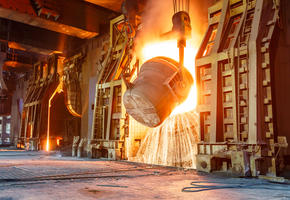In our latest blog ahead of the Asia Action Summit, we spoke with our Executive Director for China, Yuming Hui, on China's role as a global steel provider and how it's driving forward its net zero targets.
Climate change is the biggest global issue for humanity and the Earth’s ecosystem. As one of the world's largest economies with the largest population, as well as the largest energy consumer and greenhouse gas emitter, China is crucial to achieving Asian and global net zero carbon emissions. It has the potential, the capacity and the capabilities to deliver the energy transition.
Over the last few decades, China has accelerated its innovation and deployment of renewable energy technologies and it has taken important steps to increase its use in China’s total electricity consumption. In the 14th Five-Year Plan for Renewable Energy Development1 released in 2021, it was clearly stated that by 2025, the annual power generation of renewable energy would reach about 33 trillion KWh, and the incremental share of renewable energy in the total electricity consumption during the Five-Year Plan period would exceed 50%. By 2030, the total installed capacity of wind and solar power generation will reach more than 1.2 Terawatt. According to China's National Energy Administration2, in 2022 China's domestic wind power installed capacity has reached 370 GW, and its solar power installed capacity is about 390 GW, with a total installed capacity of over 760 GW, continuing to rank first in the world. China also continues to promote the development of renewable energy through a series of policy tools to establish a green power certificate trading mechanism, making it easier for corporates to access renewables in the country.
Although renewable energy is being rapidly deployed, coal is still one of China's traditional energy sources. Given China's natural resources, and like many other countries and regions, China faces the dual pressures of ensuring a stable energy supply and economic development. It would have a significant impact on China's economy and society to completely abandon coal in the short term. How to accelerate the development and use of renewable energy is key to the Chinese and global market, while maintaining energy security and economic growth.
From the perspective of sustainable economic development, if the decarbonisation of heavy industries, such as steel, can be delivered through an increased use of renewable energy, then these technologies will be rapidly deployed across the country. Heavy industries use massive amounts of energy for their production and operation, while renewable energy provides a low-carbon and clean energy option. This can not only provide a fundamental solution for the low-carbon transformation of heavy industries, but it also increases the proportion of renewable energy in the overall energy consumption, ultimately accelerating the green-oriented transition of energy.
For years, China has been striving to promote energy-saving and carbon reduction for the steel industry. In addition to strictly implementing production capacities, other measures have also been taken to achieve low-carbon transition for the steel industry, such as encouraging the development of advanced electric furnaces and promoting the best practice of low-carbon ironmaking technology.
However, as the largest steel production centre and exporter globally, a large-scale, low-carbon transformation of China's steel industry requires the collaborative efforts of the entire value chain. This will create a broader and economically sustainable market for low-carbon steel. Steel makers can demand low-carbon raw materials and energy supplies from their suppliers, thus inspiring the collaborative transformation of the entire steel centric value chain towards a low-carbon future.

The link between domestic companies and multinational corporations in the low-carbon transformation of the steel industry is highly significant, by demanding ‘environmentally friendly steel to reduce carbon emissions. This requires joint efforts from the entire value chain to form globally acceptable standards and verification methods, deepen the understanding of each other's needs and low-carbon steel production capacity, and forge an upward spiral and balance of supply and demand. In addition to the low-carbon production of steel, the management of product lifecycle emissions is important for companies to reduce emissions through energy efficiency and recycling.
To form the links, stakeholders across the steel value chain, including steel makers, domestics and multinational manufacturing companies, need to communicate their consensus, ambitions, and expectations to policy makers in China, as well as relevant regions and industries globally.
Chinese companies and organisations have the potential to become a true green powerhouse by reaching a consensus and working together with the global low-carbon development force and help drive climate action fast.
To reach this goal, it’s vital all stakeholders work together. For this reason, Climate Group’s Asia Action Summit on 8 June will focus on bringing together decision makers and business leaders from the steel and energy sectors to accelerate Asia’s role as an economic, green powerhouse – with a clear path to net zero.
We look forward to seeing you in Singapore or online, charting a way forward for the energy transition in Asia.





